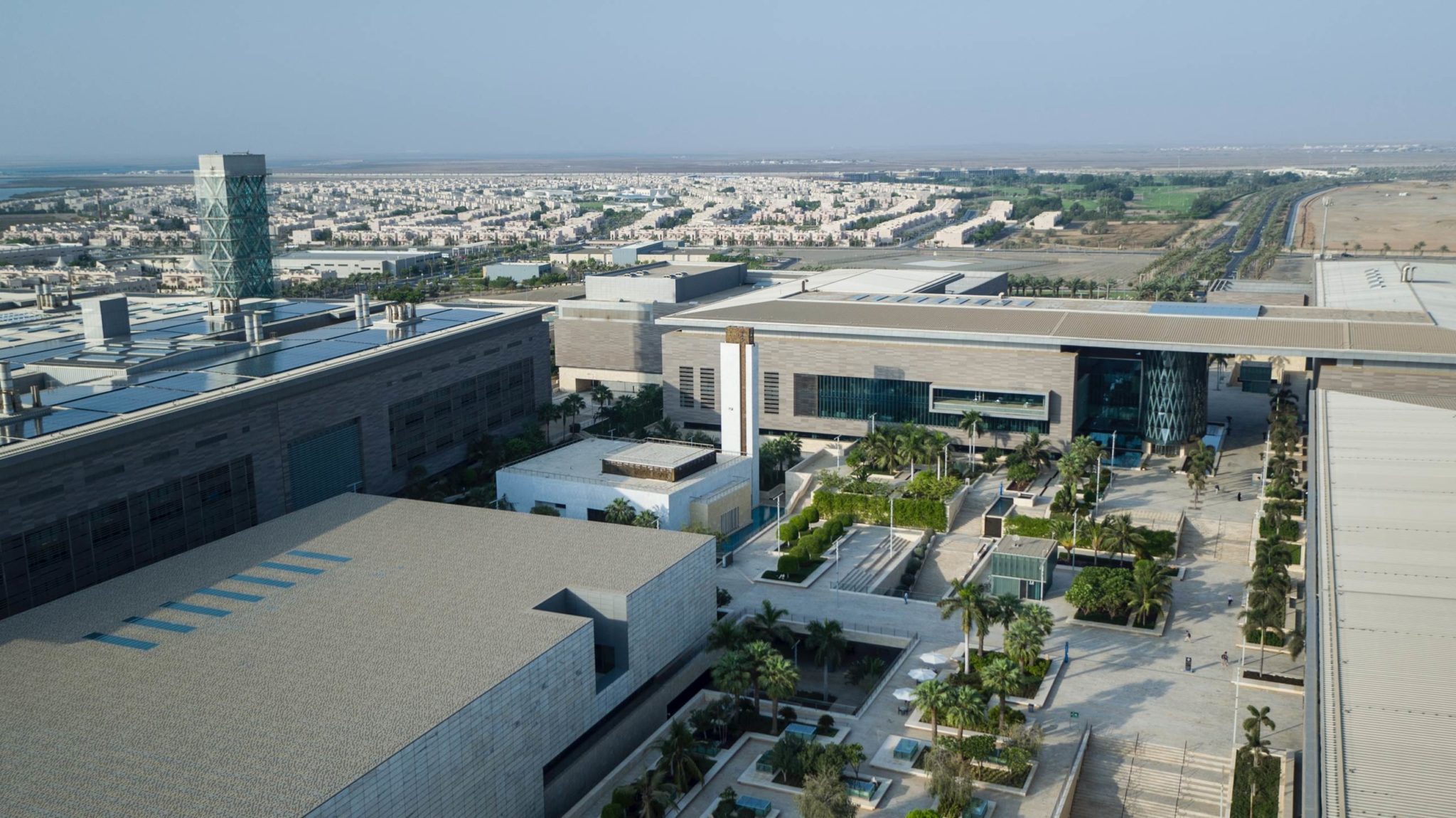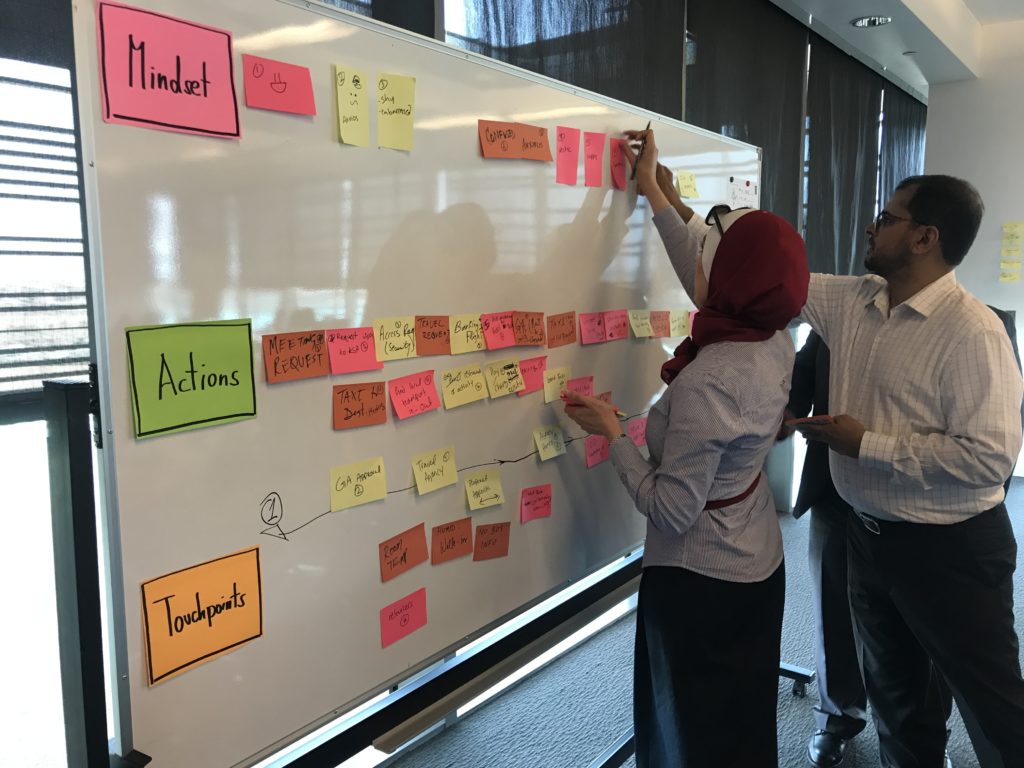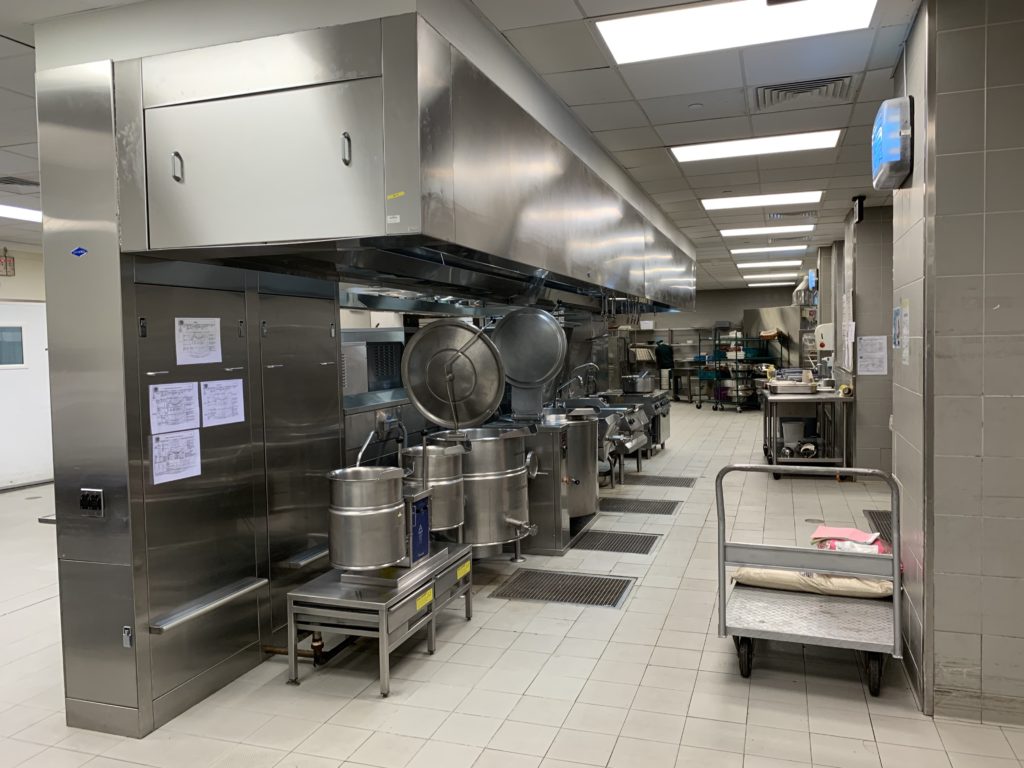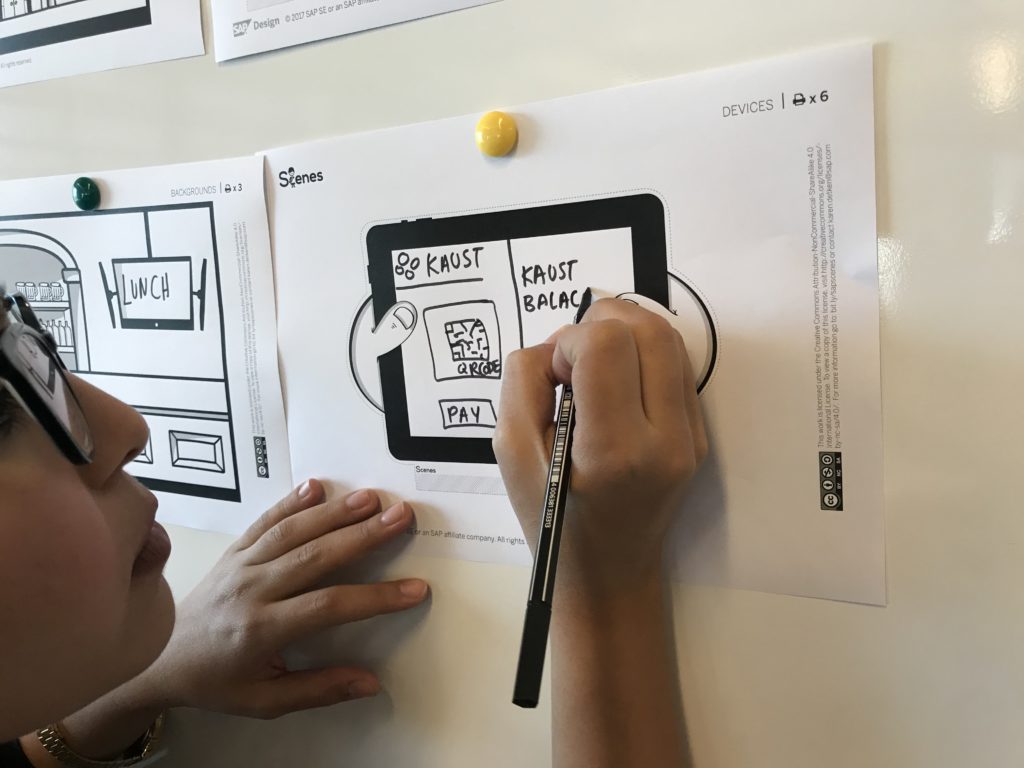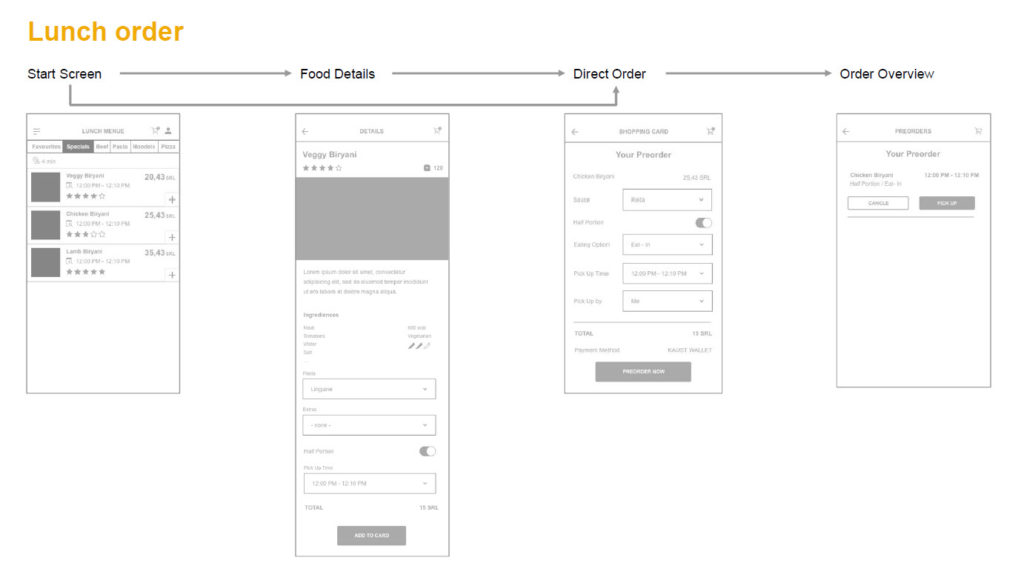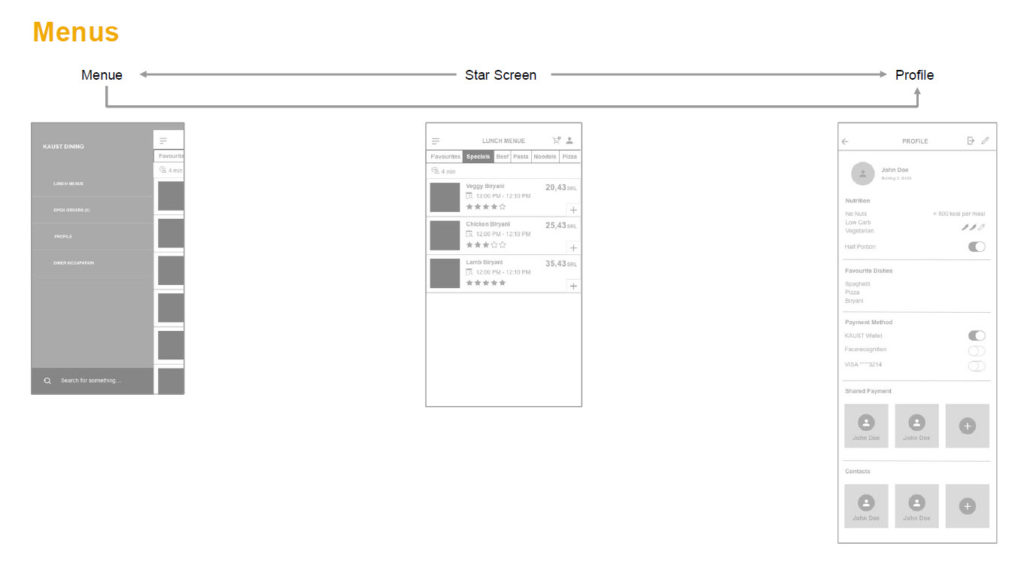What started as a simple idea is becoming a broad smart city implementation powered by SAP Business Technology Platform
In 2019, when KAUST and SAP initially started to re-imagine the campus dining experience for university members, it was still a long-term vision to grow this idea into a holistic smart city concept. The project team selected this area as a first step on the innovation journey, knowing that it’d be a long and challenging process. They worked with food services teams as well as with service providers to leverage existing building blocks, streamline the digital transformation journey and reduce adoption barriers.
As a result, the new “KAUSTCentral” application serves as communication hub built with SAP Business Technology Platform. What’s more, KAUST’s adapted innovation model now enables the organization to scale its digital transformation experience as a whole! Here’s how KAUST got there.
In collaboration with the SAP AppHaus, the King Abdullah University of Science and Technology (KAUST) aimed at improving the user experience of living on the campus for residents and guests, starting with all things related to dining on the campus. Project lead Juan R. Carvallo Alarcon, Experience Design and Architecture Manager, explains: “Our intent has always been to transform the whole campus experience of living there or visiting it. So, among the existing opportunities we started exploring how we could transform the dining experience, where the shared vision and engagement with our food services colleagues has been key for the journey success.”
By applying SAP’s Human-Centered Approach to Innovation, the KAUST innovation team together with the SAP AppHaus experts conducted design workshops and ran user research activities to develop a consumer-oriented prototype for a dining app on iOS devices. At the beginning, the project team did not have clear plans on the actual implementation topology. At KAUST, the team members knew they had many existing capabilities, and just wanted the whole transformation journey to be experience- and not technology driven. So, project members on both sides did not expect that the digital dining engagement would be the initial spark for an impactful SAP Business Technology Platform implementation enabling all facets of a truly smart city.
“To begin with, at KAUST we are continuously looking for ways to enhance the user's experiences, and I believe the collaboration with the SAP team and the utilization of SAP’s human-centered innovation methodology helped us streamline the experience roadmap. I am very pleased we started with improving the user experience and then moved on to adopt the right technology architecture.”
– Maimouna Melibari, project team member at KAUST, Senior Experience Designer
KAUST set sail to become a “smart campus”
Located on the Red Sea coast, the King Abdullah University of Science and Technology (KAUST) is a prominent institution built in 2009 in Thuwal, Saudi Arabia. As an institution of higher education, KAUST seeks to improve the life of humanity at large, mainly through research and constant innovation. With a size of roughly 36 million square meters, the campus, a city in proportion, houses more than 7,000 students, faculty staff and family members from about 120 nations.
As a catalyst for innovation, KAUST is becoming a living lab and Smart City where the so-called KAUSTCentral ecosystem and apps act as a digital hub to transform and bundle all types of intelligently managed experiences. Be it in booking a taxi, entering the KAUST campus or the simple act of dining, KAUST seeks to ensure convenience, promote sustainability, and enhance user experience in all types of amenities, from healthcare and recreation centers to provisioning.
Looking back and ahead
“Our deep partnership throughout this project has shown yet another time that SAP’s Human-Centered Approach to Innovation connected with the power of SAP BTP makes a huge difference to serve our customers’ needs and ambitions towards reaching their visionary goals and establishing this truly intelligent KAUST Smart City concept.”
– Marcus Dorfmeyer, Project Lead at the SAP AppHaus Heidelberg
The engagement with SAP provided the customer team with insights on how to refine the output of Design Thinking sessions, create storyboards, journey maps, design wireframes, hackathons and focus groups. And the customer team did not stop at this level but eagerly translated the innovation steps into their own organization and its processes. The innovation team built up expertise, adapted the approach as they created the KAUST Smart brand that gained reputation with incremental outcomes, adding value to the user experience on the campus with every new innovative release.
Looking back on how it all started, project lead Juan R. Carvallo Alarcón emphasizes that a fundamental aspect of the KAUSTCentral ecosystem is its flexibility to integrate with existing and third-party systems. It can grow and add more capabilities that enrich the experience both of KAUST residents and visitors. Key to achieve this, has been the creation of the following components within the KAUSTCentral ecosystem:
- KAUSTCentral login: a user identification mechanism designed to empower KAUST community members and visitors to have a simple and controlled access to services and capabilities provided by multiple KAUST Teams.
- Notifications: enable KAUST teams to communicate and reach out to users individually or as part of groups
- Preferences: The user option to select what types of messages are wanted, what menu items, etc. which is fundamental for building personalized experiences
- Feedback and impact measuring: Key to enable Business teams to learn further from the users’ experiences about the services they provide, and KAUSTCentral provides an open real time channel for this.
- Online payment: Integrating with specialized vendors to simplify the journey on different services for users such as for dining, transportation, etc.
The project lead concludes: “The co-innovation work with SAP gave us more context to develop our own innovation methodology, and the confidence to align different teams for a common goal and cut across different organization verticals. SAP has helped us start and develop the initial structure, drill into the iceberg, so to say. The ongoing alignment with stakeholders to build what we have today in KAUSTCentral is not the end, but it is a channel for the cultural change that we are working on.”
Project Insights:
How it all started - Ordering food should be easy!
The journey to create a more convenient dining experience proved to have a few challenges. To begin with, the university administration could not access essential information like user preferences. More than 7,500 people live on the KAUST campus utilizing the restaurant facilities. With more than a hundred nationalities under one roof, the KAUST food team strives to provide a variety of food options that cater the cultural diversity, but it has always been a challenge to learn and tailor offering to meet the needs of customers. In addition, vendor performance needed to enhance and refine its catering services. It was a constant challenge for them to manage the complex demand cycles. Visitor peak times created long queues at some of the restaurants, which slowed down the process and could lead to frustration for diners. Furthermore, the lack of a digital payment option slowed down the pace at which people could be served.
The innovation journey: Exploring topics and prioritizing them in a participatory Design Workshop (Explore)
To address the dining experience challenge, KAUST asked SAP to collaborate and build a joint game plan on priorities and how to proceed. As with every other project, the SAP AppHaus team started with the steps of exploring and discovering to root out the challenges and needs that required process optimization. In June 2019, they conducted a Design Workshop on site at the KAUST campus.
“This engagement has given us an opportunity to learn from our customers and provide a different type of experience where we can continuously test new possibilities to not only improve the customers` satisfaction, but also improve our operating model. Something that is key to make the magic of a good experience a reality.”
– Mr. Husam Henawi - Catering and Executive Service Lead - and Mr. Abu Zied - Food Services Specialist
As a result, the key focus topics could be identified. All participants discussed and prioritized the needs of key end users based on the Design Thinking methodology along SAP’s Human-Centered Approach to Innovation.
User research on dining preferences (Discover)
In a collaborative session, the results showed participants wanted to do the following:
- pick out food based on their needs to personalize menus
- be able to reserve their desired meal and avoid doing lines so they could spend more time doing social networking than waiting
- find a way to coordinate time for lunch with friends in their busy schedules
- lower the food waste caused by large portions that did not fit in takeaway containers
Based on these needs and ideas for solutions collected in the workshop, the SAP AppHaus team conducted user research with a diverse group of individuals to validate the requirements for the app. Participants explained their food selection and their preferences for the paying process along with a few other general factors. Furthermore, the project team conducted on site research by putting themselves in the situation of customers and collecting first-hand information about the dining experiences. By focusing on the end-user, SAP AppHaus identified key issues in the dining process to be addressed in the “KAUSTCentral” app.
Workshop impressions
From ten minutes queuing to getting the food in forty seconds
This information was essential to meet the assorted cultural expectations, budgets, and special dietary needs. The conducted research led to ideas for process improvement. To enhance expediency and streamline the food ordering process, customers were given the option to book a timeslot to pick up their food and make digital payments. This proved to be the perfect solution to decrease the long queues and waiting time. With a few quick taps on their devices, customers went from waiting ten minutes for their food to a mere forty seconds. Following their meal, diners now provide their feedback in a survey based on SAP’s Experience Management solutions.
From customer feedback to better catering processes
By collecting feedback and offering the preordering function, vendors could improve their catering processes. Based on the predicted demand they could plan their staffing and food orders accordingly. This improvement in resource planning would make their job easier when it comes to tailoring a better dining experience and meeting the needs and tastes of their customers. This efficiency gain in food preparation and resource planning represents a fringe benefit to significantly reduce CO2 emissions and food waste.
Introducing the new dining ecosystem (Design and Deliver)
With the resulting data on hand, a prototype iOS app was first built for Apple iPhone and iPad devices that could run with SAP Business Technology Platform. Today, the end user app is available for iOS and Android, it is a web-based application. What’s more, the app can easily be scaled according to the university’s growth. For the demo, participating experts used SAP BTP Software Development Kit (SDK) for iOS and opened it for integration with SAP Analytics Cloud and the Experience Management solutions from SAP. End users could use a personalized screen that offered recommendations based on previous food choices and purchase history, as well as the meals’ ingredients and nutrients.
Design workshop and resulting iPhone prototype for customer view
Student hackathon to test implementation steps
To test and validate the implementation steps KAUST students took part in a hackathon. Organized and led by SAP iOS expert Philipp Woessner, the event resulted in additional beneficial data. With participants from all types of specialties, the hackathon was a good example of the culture and innovation spirit KAUST has. And technology was the key to kickstarting the necessary changes to make the dining experiences even better.
At KAUST, Christopher J. Sealey, Vice President Community Life, described this first innovation step as follows: “Our new Café Dining ecosystem sets KAUST apart as a living laboratory that leverages new technologies and processes. We’re developing a personalized experience that adapts to everyone’s needs, is environmentally friendly, and creates a highly collaborative environment in all our dining facilities.”
